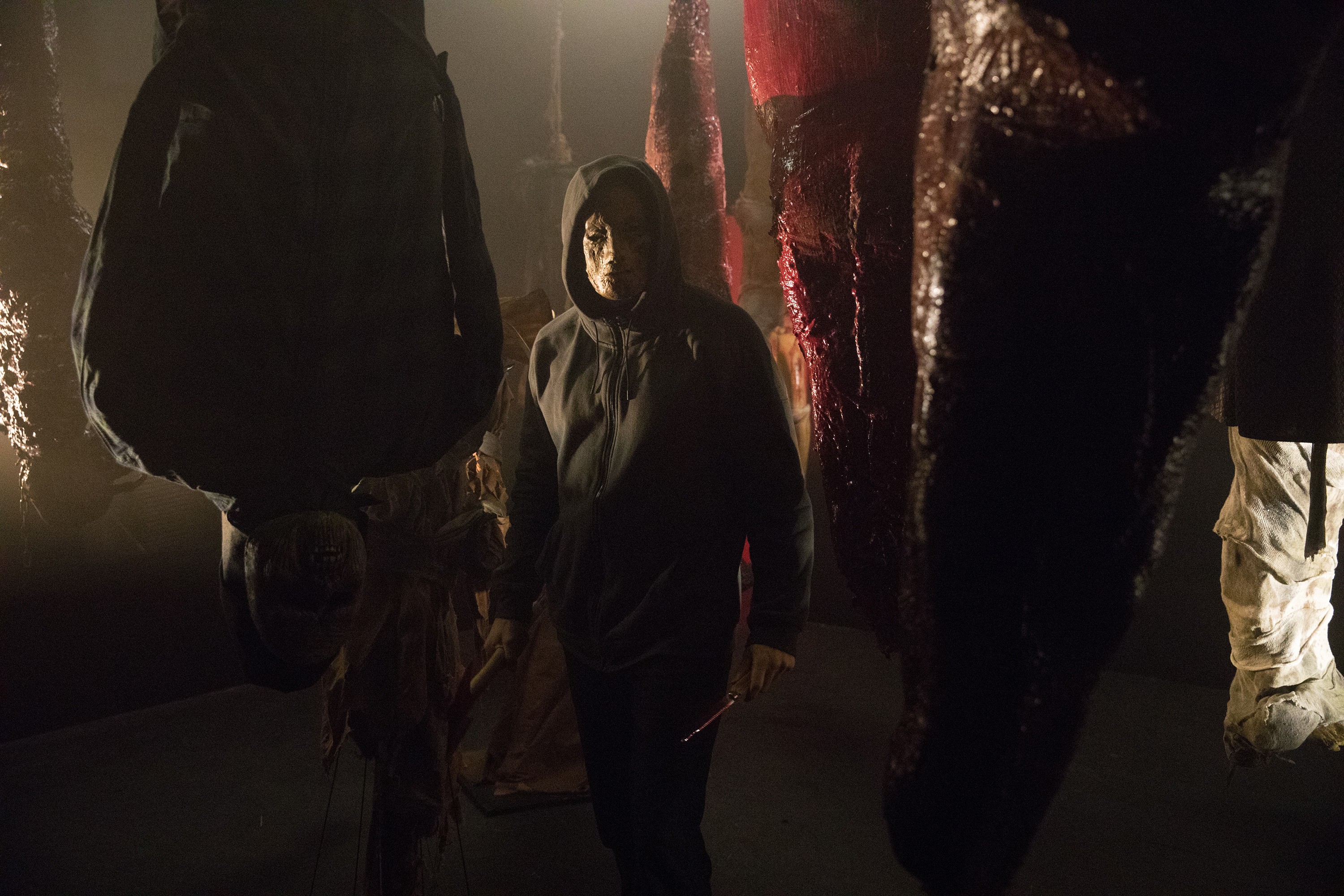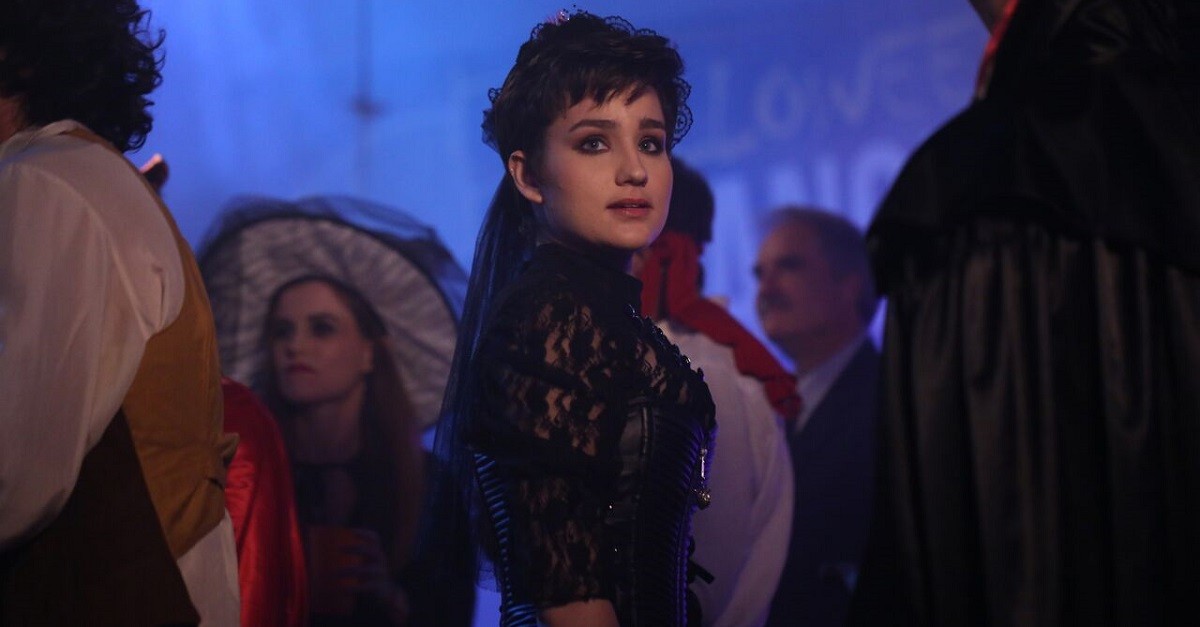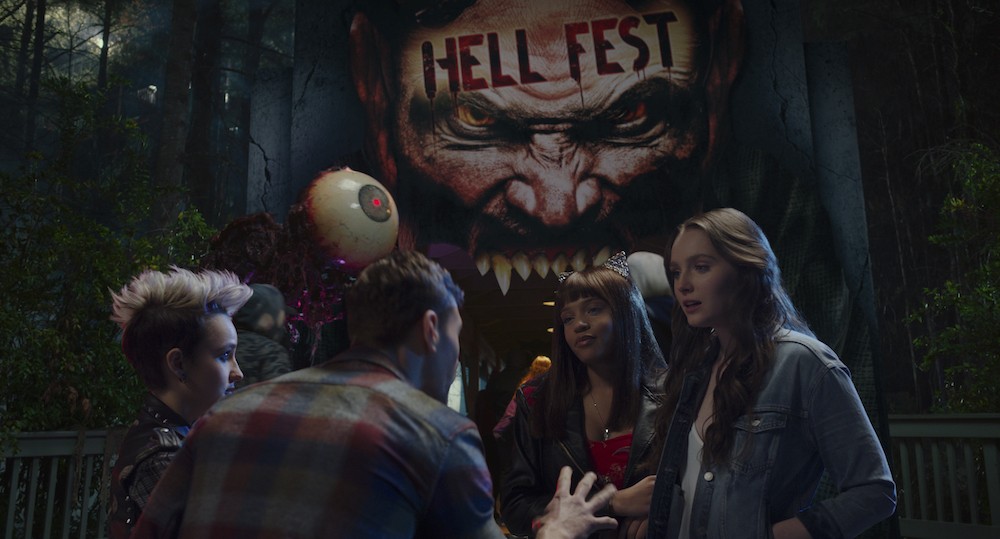
For most of us, death will come by organ failure, cancer, accident, or stroke. Our bodies will wear out, and in the boredom and bureaucracy of hospitals we will get misplaced, be forgotten, fade out. “In headaches and in worry vaguely life leaks away,” as the poet says.
Like most slasher films, Hell Fest posits a much sexier and sudden end for audience identification characters in their prime. They will be perforated by a psychotic masked stabber of innocents, specifically during a horror-themed carnival in which they cannot tell real terrors from fake. This carnival is called Hell Fest. It’s a good conceit. The callow youths of generic temperaments are constantly taunting the actual killer, thinking he’s a carnie, and once convinced he’s truly homicidal, are alternately overly afraid of thrill ride jump scares or completely ignore them as they try to escape.
To buy in, you must accept that the actual Hell Fest is a seasonal attraction that has the budget to pay for hundreds of costumed performers and smoke machines, and that our college-age characters, led by friends Natalie (Amy Forsyth) and Brooke (Reign Edwards), are not too old to rhapsodize about scary mazes and know them by name.

Amy Forsyth (center) dodges a deranged killer in Hell Fest
At first Hell Fest seems like a rave, but as the killer, wearing a mask like a Greek chorus member with unaligned eyes, follows them deeper and deeper, it becomes as large and well-funded as Disney World. The dialogue is banal (“VIP, bitches!” is how the characters express joy at getting free passes), but at times naturalistic, when the actors talk too quickly and over each other in the improvised manner of real people. When murders happen, the film takes care to slow down and emphasize Bear McCreary’s soundtrack and a lack of chatter.
A tiny highlight for me was a long buildup of the assassin approaching a photo booth where, instead of killing the shy couple inside, he steals evidence of their first kiss. It plays on the main character’s nervousness over her date, casting the villain as her worry.
But mostly the characters are on rails, behaving like horror characters do. Natalie is a virginal brunette, Brooke her devoted best friend, and everyone else jokey satellites. Tony Todd (horror vet and star of Candyman) appears onscreen as emcee for a guillotine, and also aurally in pre-recorded safety warnings. It’s unclear at times how scary the mazes are supposed to be, if our fatigue with repetitive rooms filled with dummies is supposed to mirror that of the characters.

Similar groups have been slaughtered countless times in other movies in similar ways. I did like that the heroine learns to “look at their hands” to distinguish mannequins from performers in hiding, then uses this, like Paul Atreides learning to walk irregularly to avoid sandworms in Dune, to overcome fear later. It’s a how-to: Establish the rational dynamics of a situation, and follow them methodically.
Slashers eventually will evolve different ways to express fear of death, sex, and the Other (the name of the killer’s mask here according to the credits, a nod to film theory). I think the future is Cronenbergian: body horror should take the place of the slasher film as the latter’s gendered emphasis on murdering women becomes embarrassing. But body horror takes latex and money. Fake knives cost less.
On a personal note, I played a zombie clown in a haunted house horror once, local filmmaker Jim Weter’s sequel At Stake: Vampire Solutions: Back in Business. I marveled how sections of the haunted house were like premade film sets, how we could change from a bloody doctor’s office to a spooky hallway in a few steps.
This film makes me feel no such frisson. The director, Gregory Plotkin, did well as an editor on movies like Game Night and Get Out, but here any sense of humor or satire is drowned in blandness. The actors are fine. They pantomime the sense of the uncanny as they notice the stagecraft around them turn real, and head on into exhausted fright. Toward the end, there’s the driest of all character development: Natalie and Brooke bond in a bathroom by planning to go to Spain. Realistically mundane, they joke about the word “tapas” sounding like the word “topless.” But it leads nowhere and feels empty. Here are youth. Watch them die. The earth swallows us all, but it shouldn’t feel boring.